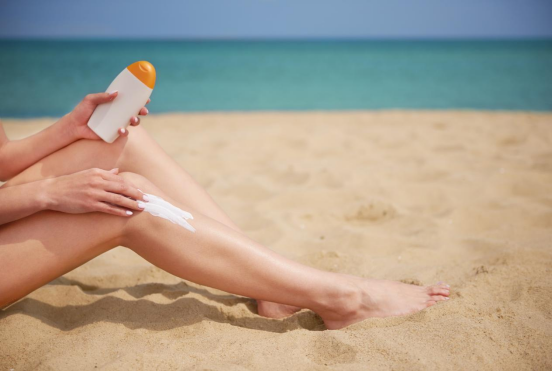
As consumers come to be progressively wise about skincare, the discussion in between chemical and physical sunscreens continues to be a hot subject. While both deal essential protection against the sun's harmful ultraviolet (UV) rays, physical sunscreens are typically admired for their mild yet reliable formulation, making them a preferred option for those with sensitive or reactive skin. The trick to their success depends on their energetic ingredients, which develop a physical barrier on the skin to block out UV radiation. This article will delve into the world of physical sunscreens, focusing on their essential components: zinc oxide and titanium dioxide.
Unlike their chemical counterparts, which take in UV radiation and convert it into warm, physical sunscreens work by sitting on top of the skin to form a shield that deflects and spreads both UVA and UVB rays. This device is why they are often referred to as "sunscreens." The key benefit of this approach is its prompt efficiency upon application and the reduced probability of triggering skin inflammation, as the ingredients are not absorbed right into the skin.
One of the most popular component in the physical sunscreen family is Zinc Oxide. This powerhouse mineral is unique in its capacity to give broad-spectrum security, indicating it efficiently protects the skin versus the complete spectrum of UVA and UVB rays. UVA rays are accountable for premature aging, consisting of creases and fine lines, while UVB rays are the primary cause of sunburn. By providing comprehensive defense versus both, zinc oxide plays an important role in preventing sunlight damage and reducing the threat of skin cancer.
Furthermore, zinc oxide is renowned for its relaxing properties. It has actually been used for centuries to deal with minor skin irritations, breakouts, and burns, a testament to its mild nature. This makes sunscreens created with zinc oxide a suitable choice for people with sensitive skin, acne-prone skin, or problems like rosacea and eczema. Its non-comedogenic buildings likewise mean it is much less likely to block pores, a common worry for those with oily or combination skin.
The other principal in the physical sunscreen classification is Titanium Dioxide. This normally occurring mineral is an additional outstanding active ingredient for creating a physical obstacle against UV rays. It is extremely reliable at mirroring and scattering UVB radiation, providing durable defense versus sunburn. While it offers great defense across the UVB spectrum, it is usually considered much less reliable against long-wave UVA rays compared to zinc oxide.
Therefore, titanium dioxide is frequently utilized in conjunction with zinc oxide in sunscreen formulas. This mix creates a synergistic impact, improving the total broad-spectrum protection of the product. By leveraging the staminas of both active ingredients, formulators can develop a sunscreen that provides detailed and trusted defense against the sun's damaging rays. Like zinc oxide, titanium dioxide is likewise mild on the skin and is an ideal alternative for those with delicate or easily irritated skin.
Over the last few years, innovations in solution modern technology have addressed one of the initial drawbacks of physical sunscreens: the thick, white cast they would often leave on the skin. Modern formulations now use micronized or nano-sized particles of zinc oxide and titanium dioxide, which allows for a more cosmetically elegant application without compromising their safety capacities. This suggests you can appreciate the mild, efficient security of physical sunscreen ingredients a physical sunscreen without the tell-tale white residue.
Finally, physical sun blocks use a trustworthy and mild method to safeguard your skin from the sun. Their star active ingredients, zinc oxide and titanium dioxide, operate in harmony to create a physical shield that disperses dangerous UVA and UVB rays. With their exceptional security profile and viability for all skin kinds, particularly sensitive skin, physical sun blocks are a powerful force in the fight versus sunlight damage. The following time you are Surf the sunscreen aisle, consider the effective, protective, and skin-loving benefits of a physical solution.